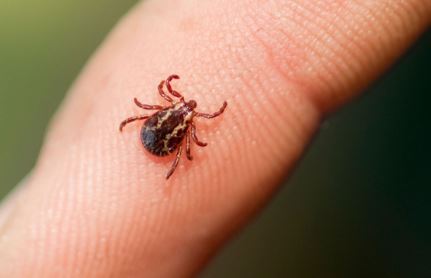
The Tick Testing Program at the Connecticut Agricultural Experiment Station (CAES) is reporting peak tick abundance throughout the State at this time, and higher than average infection with Borrelia burgdoferi, the causative agent of Lyme disease. According to Dr. Goudarz Molaei, who directs the CAES Tick Testing Program, “we have received over 2,600 ticks so far this year for testing and greater than 40% have tested positive for Lyme disease spirochetes. This is roughly 10% higher than what we have typically seen over the last five years.”
The Experiment Station is also reporting high tick infection rates with Babesia microti, the causative agent of babesiosis, a malaria-like illness (8%), and Anaplasma phagocytophilum, the causative agent of human granulocytic anaplasmosis (12%).
“We are in the midst of a peak activity for nymphal stages of blacklegged “deer” ticks, Ixodes scapularis, that are often difficult to detect because of their small size and propensity to quickly attach and feed”, said Dr. Theodore Andreadis, Director of the CAES. “Using tick repellants when hiking or camping and conducting tick checks remain the best ways to reduce the risk of contracting tick-borne diseases”.
According to the Centers for Disease Control and Prevention (CDC), Lyme disease is the most commonly reported vector-borne disease in the United States that affects an estimated 329,000 people annually and can cause severe damage to joints and the nervous system. The Connecticut Department of Public Health reported 2,022 cases of Lyme disease in 2017. Several hundred cases of babesiosis and human granulocytic anaplasmosis have also been diagnosed.
Detailed information about the Tick Testing Laboratory, personal protection measures, tick control measures, and tick-associated diseases can be found at the following websites:
N